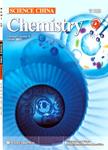Risk assessment of dietary exposure to PCDD/Fs, DL-PCBs and NDL-PCBs of Hong Kong resident
Risk assessment of dietary exposure to PCDD/Fs, DL-PCBs and NDL-PCBs of Hong Kong resident作者机构:State Key Laboratory of Environmental and Biological Analysis Department of Chemistry Hong Kong Baptist University
出 版 物:《Science China Chemistry》 (中国科学(化学英文版))
年 卷 期:2015年第58卷第6期
页 面:1082-1088页
核心收录:
学科分类:1004[医学-公共卫生与预防医学(可授医学、理学学位)] 100403[医学-营养与食品卫生学] 10[医学]
基 金:supported by the National Natural Science Foundation of China(21175025)
主 题:PCDD/Fs PCBs food dietary intake
摘 要:Concentrations of PCDD/Fs, dioxin-like PCBs as well as six indicator PCBs were determined in animal origin foods collected from Hong Kong retail market during 2008-2010. The dietary intake of an average Hong Kong adult resident was estimated to be 0.806-0.833 pg WHO-TEQ kg^-1 b.w. d^-1 of dioxin-like compounds, lower than the tolerable daily intake introduced by WHO. The 95th percentile consumer were exposed by dietary at the level of 2.72 to 2.81 pg WHO-TEQ kg^-1 b.w. d^-1 or 81.6-84.3 pg WHO-TEQ kg^-1 b.w. month^-1 , higher than 70 pg WHO-TEQ kg t b.w. month^-1. DL-PCBs contributed 49.2% of total TEQ intake. The daily intake of indicator PCB was 2.83 ng kg^-1 b.w. d^-1. Approximately 2/3 of dietary intake of dioxin-like compounds came from sea food products. Ten brands of infant formula products were tested and the potential dietary intake of formula-fed infants of Hong Kong was estimated to be 1.46-1.58 pg WHO-TEQ kg^-1 b.w. d^-1 during 1st month and decreases afterwards.



